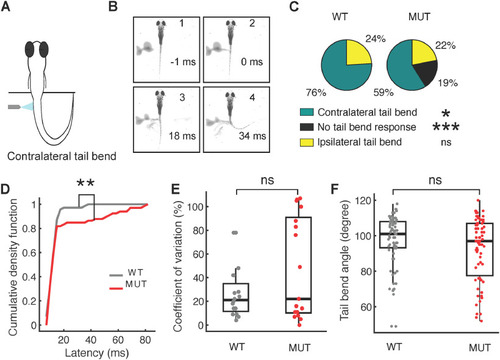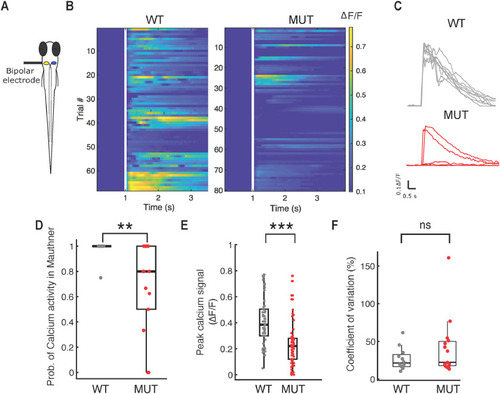- Title
-
High behavioural variability mediated by altered neuronal excitability in auts2 mutant zebrafish
- Authors
- Jha, U., Kondrychyn, I., Korzh, V., Thirumalai, V.
- Source
- Full text @ eNeuro
|
TALEN-induced mutation in the |
|
Morphologic characterization of |
|
Onset of escape response is delayed and highly variable in |
|
Escape response defects in |
|
Mauthner neuron fails to fire reliably in PHENOTYPE:
|
|
Mauthner neuron in PHENOTYPE:
|
|
Summary of behavioral abnormalities in escape response in |







